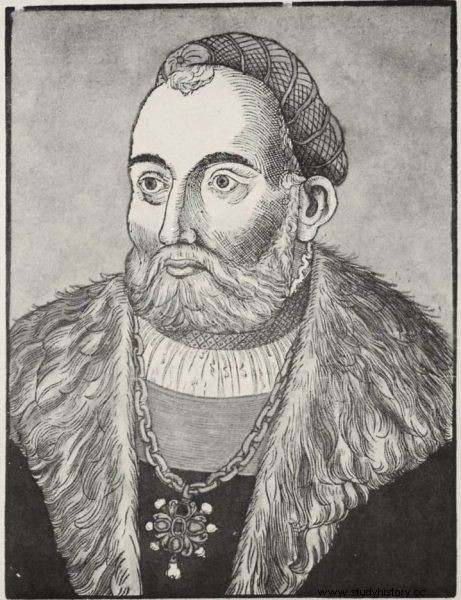Red-hot iron throne. Executioner's pincers tearing the victim's body. And the subordinates of the tortured, forced to ... bite his body, devour bits of human flesh and drink the blood of the battered.
Jan Zápolya in 1514 was not a king, but he was one of the most powerful Hungarian magnates. He had seventy-two castles and cities, he was the provincial governor of Transylvania, and he made a living out of human harm.
His brutality and bloodlust are perfectly demonstrated by the ruthless suppression of the peasant rebellion led by a certain György Dózsa in that year. The final and irrevocable evidence of Zápolya's sadistic disorders was the execution of the unfortunate people's tribune.
A throne for a rebel
Although the leader of the uprising fell into the hands of the voivode during the battle, he was not treated with the respect due to a prisoner of war. Zápolya ordered him to be seated on a red-hot iron throne placed above the stove. A red-hot iron crown was put on his head, and a no less hot scepter was pushed into his hand.
Dózsa was dying, slowly frying alive, but this was not the end of the disgusting spectacle. Nine of his closest henchmen were brought before the prisoner - tortured and starved.
The first of them, the brother of Dózsa Gergely, was dismembered alive before his eyes. Then the executioners approached Dózsa and began to ruthlessly tear his body with pliers. They only stopped when they realized that the prisoner was about to pass out.

György Dózsa on a Hungarian poster from 1972
Baked and eaten alive
Then they turned to the other prisoners and adjutants of Dózsa. Everyone was given a choice:he would be released if he immediately attacked his leader and began to bite his body in places that had been injured by the executioner's tools a moment ago. The condition of freedom was that the captive not only bit Dózsa, but also devoured the bites of his body and drank the juice flowing from his entrails.
Three or four of the inmates disgustedly refused. They were immediately dismembered. It was enough for the rest to abandon scruples. They ran like dogs to their leader and friend, relieving the executioners of the voivode. After a while, Dózsa was dead - baked and eaten alive.

Jan Zapolya in the engraving of Erhard Schon.
The man behind this execution two years earlier became the brother-in-law of the calm, compliant Polish king Sigismund (the Old), giving him his sister Barbara Zápolya as a wife. Another dynastic relationship between Jan Zápolya and the Jagiellonian dynasty will take place in 1539.
Then the Transylvanian sadist, claiming the right to the royal crown, will marry the daughter of Zygmunt and Bona Sforza:Izabela Jagiellonka.
Source:
You can learn more about the brutal face of the Renaissance in Kamil Janicki's book. Ladies of the golden age (Horizon Label 2014). The article is based on the literature and materials collected by the author during the work on the book.
